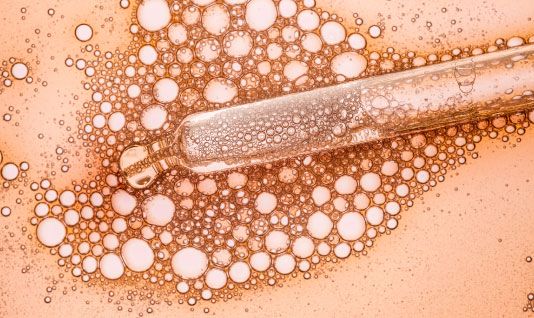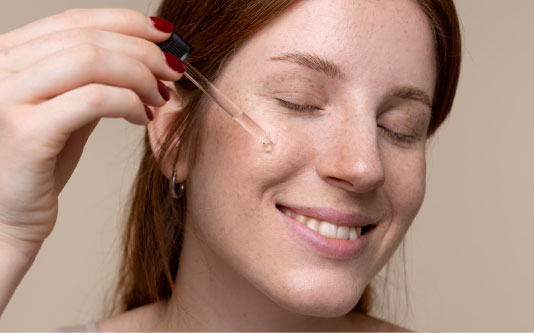Glycolic acid: what it is, what it is for and its benefits
Find out what glycolic acid is for, about its benefits and how to use it in your skincare routine. Don’t miss out!

What is glycolic acid?
It is a type of alpha hydroxy acid (AHA) derived from sugar cane. Its properties mean it easily penetrates the skin and reaches deeper layers, helping to regenerate it from the inside. One of its strengths is precisely that: it acts on all layers of our skin.

What is glycolic acid used for in beauty treatment?
It helps to stimulate skin renovation, it exfoliates dead skin cells, improves texture and confers luminosity. Furthermore, it helps reduce any excess of sebum and prevents blackheads.

Benefits of glycolic acid for regenerating your skin
Exfoliant: it acts on the corneous stratum (the outermost layer of the skin) and enhances elimination of dead skin cells from the surface of the skin. This helps to keep our face looking fresh and bright.
Regenerated skin: it penetrates the deepest layers and stimulates the dermis to produce more collagen. This helps our skin to remain firm, and minimises expression lines and wrinkles. Our skin remains soft, radiant and uniform in tone.
Controls excess sebum: by exfoliating our skin and stimulating cell regeneration, it helps to regulate sebum production and reduces blackheads, particularly in oily skin. It helps to keep pores clean, reduces dead cells that block pores, and improves acne marks.
Personalised treatment: another of the advantages of glycolic acid is that you can use it at higher or lower concentrations, depending on the benefits you are aiming for.

How to use glycolic acid safely and effectively
Choosing the right concentration of glycolic acid is very important, because the benefits will be different depending on the concentration. Lower concentrations are ideal for gentle exfoliation, whereas higher concentrations are better to deal with marks, wrinkles and imperfections. We need to take the following items into account when choosing the concentration:
- Low concentration: less than 4% is a mild exfoliant, ideal for people who are using it for the first time in their skincare routine, or for people with dry skin who want to improve their skin’s elasticity and brightness.
- Mid concentration: between 4% and 8%, continued use helps to visibly reduce wrinkles and make the tone of the skin more uniform.
- Strong: between 8% and 10%, ideal to minimise signs of ageing.
Using it as a serum at night on clean skin, as a tonic, gel or cream is recommended. It can be combined with other ingredients such as hyaluronic acid, niacinamide or bakuchiol. If you use products containing vitamin C in your beauty routine, try not to use them together. In other words, you can use vitamin C in the morning, and glycolic acid at night. If you want to use retinol, it is best to check with your dermatologist.
Regardless of your skin type or your skincare objectives, it is always best to start with mild, low concentrations of glycolic acid. As your skin gets used to it, you can apply a higher concentration if you need it.
Avoid using combinations of other strong acids, such as salicylic acid or lactic acid, since you will end up over-exfoliating your skin, and that is something you should avoid.
In general, you will not have any problems introducing it in your skincare routine along with your favourite eye cream or trusted moisturiser, but if you do have any doubts, we recommend consulting your dermatologist about the ingredients.
Formulae with hyaluronic acid or aloe vera have a moisturising, soothing effect, making them ideal to help your skin during its regeneration process.
What do you think about?
Share comments, opinions and tricks with the Community







